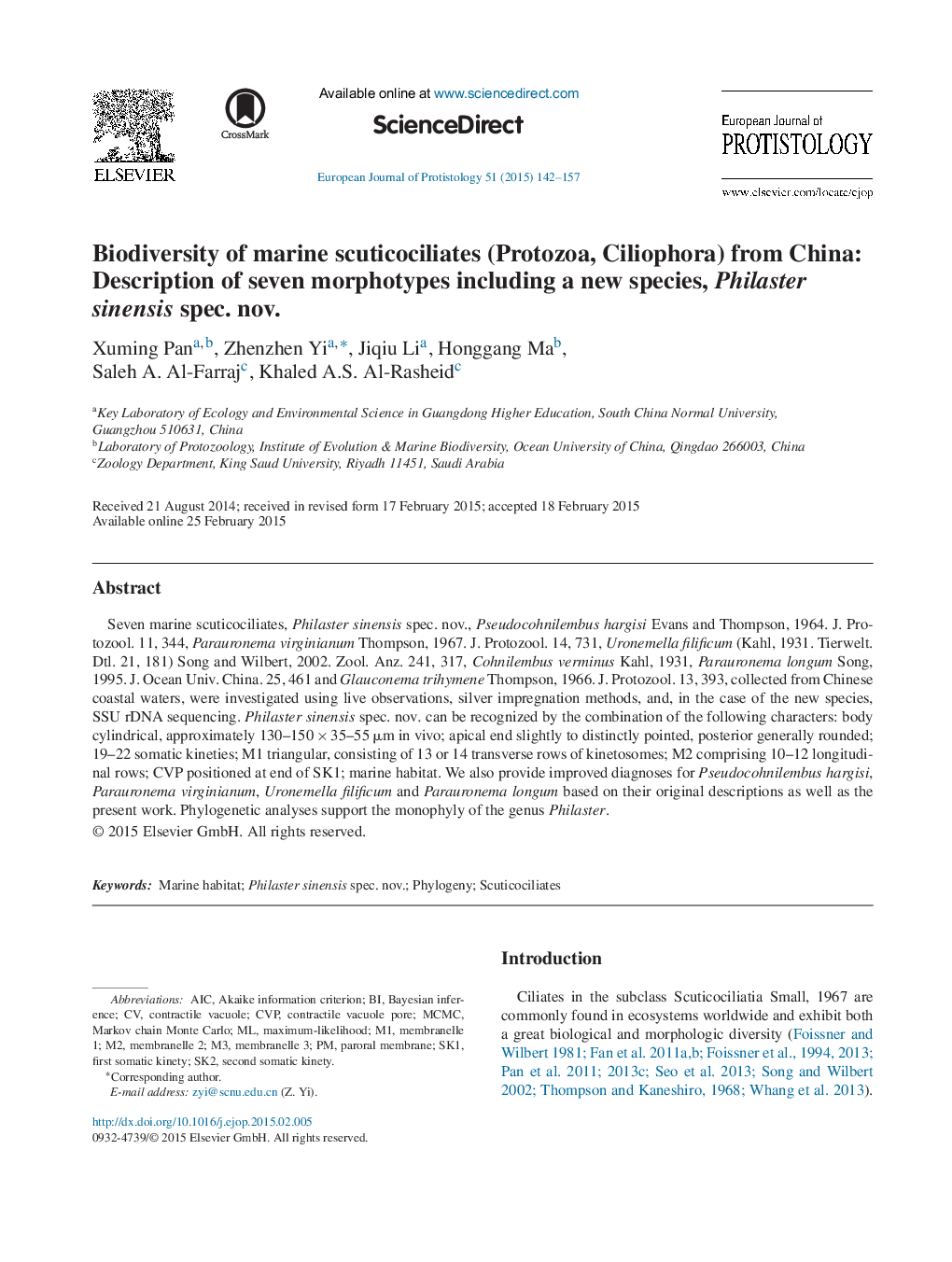| Article ID | Journal | Published Year | Pages | File Type |
|---|---|---|---|---|
| 8383015 | European Journal of Protistology | 2015 | 16 Pages |
Abstract
Seven marine scuticociliates, Philaster sinensis spec. nov., Pseudocohnilembus hargisi Evans and Thompson, 1964. J. Protozool. 11, 344, Parauronema virginianum Thompson, 1967. J. Protozool. 14, 731, Uronemella filificum (Kahl, 1931. Tierwelt. Dtl. 21, 181) Song and Wilbert, 2002. Zool. Anz. 241, 317, Cohnilembus verminus Kahl, 1931, Parauronema longum Song, 1995. J. Ocean Univ. China. 25, 461 and Glauconema trihymene Thompson, 1966. J. Protozool. 13, 393, collected from Chinese coastal waters, were investigated using live observations, silver impregnation methods, and, in the case of the new species, SSU rDNA sequencing. Philaster sinensis spec. nov. can be recognized by the combination of the following characters: body cylindrical, approximately 130-150 Ã 35-55 μm in vivo; apical end slightly to distinctly pointed, posterior generally rounded; 19-22 somatic kineties; M1 triangular, consisting of 13 or 14 transverse rows of kinetosomes; M2 comprising 10-12 longitudinal rows; CVP positioned at end of SK1; marine habitat. We also provide improved diagnoses for Pseudocohnilembus hargisi, Parauronema virginianum, Uronemella filificum and Parauronema longum based on their original descriptions as well as the present work. Phylogenetic analyses support the monophyly of the genus Philaster.
Keywords
Related Topics
Life Sciences
Agricultural and Biological Sciences
Agricultural and Biological Sciences (General)
Authors
Xuming Pan, Zhenzhen Yi, Jiqiu Li, Honggang Ma, Saleh A. Al-Farraj, Khaled A.S. Al-Rasheid,
